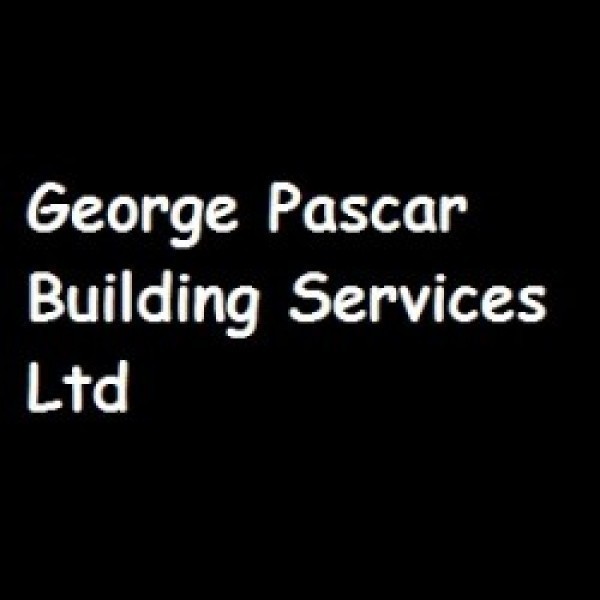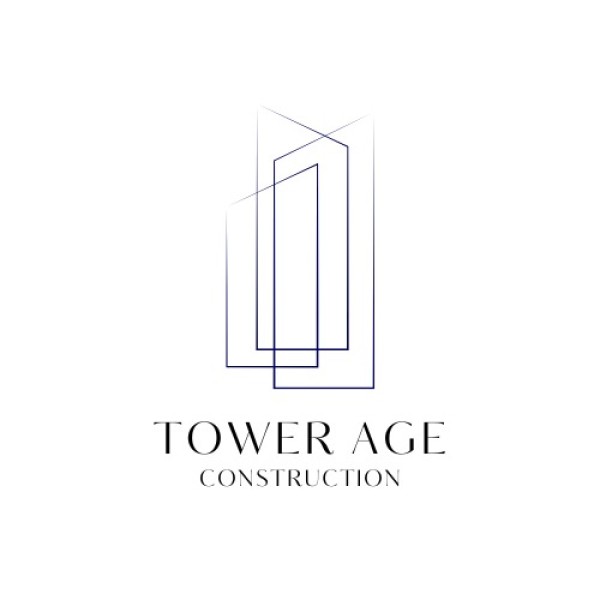Renovations in Central London
George Pascar Building Services Ltd is a premier choice for all your building needs in The Hyde and the... read more »
Welcome to EcoHome Plus Ltd, your premier choice for top-notch tradespeople services in Acton Green and the surrounding areas of Hounslow... read more »
Welcome to Impress Europe Ltd, your go-to construction experts in Chipping Barnet, Barnet, Lo... read more »
Welcome to Five Stars Builders Ltd, your premier choice for exceptional building services in... read more »
Welcome to DPS Building Ltd, your trusted partner for all your building needs in Church End and the greater Barnet, London area. Speciali... read more »
A&A Best At First Ltd is your go-to solution for exceptional building and renovation services in Chingford Hatch... read more »
Welcome to The Likeable Craftsmen, your go-to experts for all things home improvement in Potters Bar and across Hertfordshire,... read more »
Eric Lala Construction Ltd is a premier construction company based in Addiscombe, renowned for its exceptional services... read more »
Welcome to Thames Valley Contractors Ltd, your go-to experts for all things construction and renovation in Seven Kings, Redbridge, London... read more »
Welcome to Building Solution Art Limited, your premier choice for top-notch building services in Bloomsbury and the wider Camden area of... read more »
Welcome to Focus N.O.C.O. Ltd, your trusted partner for all your building and refurbishment needs in South Lambeth and across Lambeth, Lo... read more »
Welcome to Elest Group Ltd, your trusted partner for builders, painters & decorators, renovations, property refurbishment, bathroom fitte... read more »
Welcome to Synergy Building Services Ltd, your trusted partner for exceptional building solutions in Yeading and throughout Hillingdon, L... read more »
Able Refurbishments Ltd: Premier Tradespeople in Ewell and Surrey
Welcome to Able Refurbishments Ltd, the leadin... read more »
Welcome to Tower Age Construction, your premier choice for building and renovation services in Greenford and... read more »
Welcome to AGKBUILD LTD, your trusted partner for exceptional extension builders and property maintenance services in Colindale, Barnet,... read more »
Welcome to March Property & Construction Ltd, the leading experts in Extension Builders, Renovations, New Build... read more »
Sallaku Building Services is a premier choice for all your construction and renovation needs in Brentford End, proudly s... read more »
SMR Building Contractors Ltd, nestled in the vibrant area of Bromley Park, stands as a beacon of excell... read more »
Understanding Renovations in Central London
Central London, a bustling hub of culture, history, and modernity, is a prime location for property renovations. With its rich architectural heritage and ever-evolving skyline, renovations in Central London offer a unique blend of challenges and opportunities. Whether you're a homeowner looking to update your living space or an investor aiming to increase property value, understanding the intricacies of renovating in this iconic area is crucial.
The Appeal of Central London
Central London is renowned for its vibrant lifestyle, historical landmarks, and diverse neighbourhoods. From the opulent streets of Mayfair to the artistic vibes of Soho, each area offers a distinct charm. This allure makes Central London a sought-after location for property ownership and, consequently, renovations. The potential to blend historical elegance with modern amenities attracts many to undertake renovation projects here.
Historical Significance and Preservation
One of the unique aspects of renovating in Central London is the need to balance modernisation with preservation. Many properties are listed buildings, meaning they are protected due to their historical or architectural significance. Renovating such properties requires adherence to strict guidelines to maintain their character. This often involves working closely with conservation officers and obtaining necessary permissions.
Listed Buildings and Conservation Areas
Central London is home to numerous listed buildings and conservation areas. Renovating these properties involves navigating complex regulations. It's essential to understand the different grades of listing and the implications for renovation. Grade I buildings, for example, are of exceptional interest, and alterations are heavily restricted. Engaging with experts who specialise in heritage properties can be invaluable in ensuring compliance and preserving the building's integrity.
Planning Permissions and Regulations
Securing planning permission is a critical step in any renovation project in Central London. The process can be intricate, given the area's density and historical significance. Understanding local council requirements and engaging with planning consultants can streamline this process. It's also important to consider factors such as building height restrictions, impact on neighbouring properties, and environmental considerations.
Working with Local Councils
Each borough in Central London has its own set of planning regulations. Engaging with local councils early in the renovation process can help identify potential challenges and opportunities. Councils often provide pre-application advice, which can be beneficial in understanding the feasibility of proposed changes and ensuring compliance with local policies.
Budgeting for Renovations
Renovating in Central London can be a costly endeavour. The high demand for skilled labour and quality materials, coupled with the complexities of working in a densely populated area, can drive up costs. It's crucial to establish a realistic budget that accounts for all aspects of the renovation, including unexpected expenses. Engaging with experienced contractors and project managers can help in creating a comprehensive financial plan.
Cost Considerations and Financial Planning
When budgeting for renovations, consider factors such as the property's current condition, the scope of work, and the desired outcome. It's also wise to set aside a contingency fund for unforeseen issues, which are common in older properties. Financial planning should also include potential increases in property value post-renovation, which can offset initial costs.
Choosing the Right Contractors
Finding skilled and reliable contractors is vital for a successful renovation. In Central London, where the stakes are high, it's important to choose contractors with a proven track record in similar projects. Recommendations, reviews, and portfolios can provide insights into a contractor's expertise and reliability. Additionally, ensuring that contractors are familiar with local regulations and have experience working with listed buildings can prevent costly mistakes.
Evaluating Contractor Credentials
Before hiring a contractor, verify their credentials and experience. Check for memberships in professional bodies, such as the Federation of Master Builders, which can indicate a commitment to quality and professionalism. It's also beneficial to request references from previous clients to gauge satisfaction and project outcomes.
Design Trends in Central London Renovations
Renovations in Central London often reflect a blend of traditional and contemporary design elements. Homeowners and designers are increasingly incorporating sustainable materials and energy-efficient technologies to create eco-friendly spaces. Open-plan living, smart home integrations, and bespoke finishes are popular trends that enhance both functionality and aesthetic appeal.
Incorporating Modern Amenities
Modern amenities, such as underfloor heating, integrated lighting systems, and high-tech security features, are becoming standard in Central London renovations. These additions not only improve comfort and convenience but also increase property value. When planning a renovation, consider how these features can be seamlessly integrated into the existing structure.
Maximising Space in Urban Environments
Space is at a premium in Central London, making efficient use of available square footage essential. Innovative design solutions, such as mezzanine levels, built-in storage, and multifunctional furniture, can maximise space without compromising on style. Engaging with architects and interior designers who specialise in urban living can provide creative solutions to space constraints.
Creative Space Solutions
Consider incorporating elements like sliding doors, fold-away furniture, and mirrored surfaces to create the illusion of more space. These solutions can enhance the sense of openness and light in smaller properties, making them more appealing to potential buyers or tenants.
Environmental Considerations
With growing awareness of environmental issues, many renovation projects in Central London are prioritising sustainability. This includes using eco-friendly materials, improving energy efficiency, and reducing waste. Implementing green technologies, such as solar panels and rainwater harvesting systems, can significantly reduce a property's carbon footprint.
Sustainable Building Practices
Adopting sustainable building practices not only benefits the environment but can also lead to long-term cost savings. Consider using reclaimed materials, installing energy-efficient windows, and opting for low-VOC paints. These choices contribute to a healthier living environment and can enhance a property's appeal to environmentally conscious buyers.
Impact on Property Value
Renovations in Central London can significantly impact property value. Well-executed projects that enhance functionality, aesthetics, and sustainability tend to yield the highest returns. Understanding market trends and buyer preferences can guide renovation decisions to maximise investment potential.
Market Trends and Buyer Preferences
Stay informed about current market trends and buyer preferences to ensure renovations align with demand. Features such as home offices, outdoor spaces, and high-speed internet connectivity are increasingly sought after. Tailoring renovations to meet these demands can enhance a property's marketability and value.
Challenges of Renovating in Central London
Renovating in Central London comes with its own set of challenges. The area's density, traffic congestion, and noise restrictions can complicate logistics and timelines. Additionally, the need to comply with stringent regulations and preserve historical features adds layers of complexity to renovation projects.
Overcoming Common Obstacles
To overcome these challenges, thorough planning and effective communication with all stakeholders are essential. Establishing clear timelines, securing necessary permits, and coordinating with local authorities can help mitigate potential issues. Flexibility and adaptability are also key in navigating unexpected obstacles during the renovation process.
Frequently Asked Questions
- What are the key considerations when renovating a listed building in Central London? When renovating a listed building, it's crucial to adhere to preservation guidelines, obtain necessary permissions, and work with experts in heritage properties.
- How can I ensure my renovation project stays within budget? Establish a realistic budget, include a contingency fund for unexpected expenses, and engage experienced contractors to manage costs effectively.
- What are the current design trends in Central London renovations? Popular trends include open-plan living, sustainable materials, smart home technologies, and bespoke finishes that blend traditional and contemporary styles.
- How can I maximise space in a small Central London property? Use innovative design solutions like mezzanine levels, built-in storage, and multifunctional furniture to make the most of available space.
- What are the benefits of incorporating sustainable practices in renovations? Sustainable practices reduce environmental impact, lead to long-term cost savings, and enhance a property's appeal to eco-conscious buyers.
- What challenges should I expect when renovating in Central London? Expect challenges such as navigating complex regulations, managing logistics in a dense urban area, and preserving historical features.
Renovating in Central London is a rewarding endeavour that combines the excitement of modernisation with the responsibility of preservation. By understanding the unique aspects of this iconic area, homeowners and investors can create spaces that are not only beautiful and functional but also respectful of the city's rich heritage. With careful planning, expert guidance, and a touch of creativity, renovations in Central London can transform properties into stunning urban sanctuaries.
Send a message























